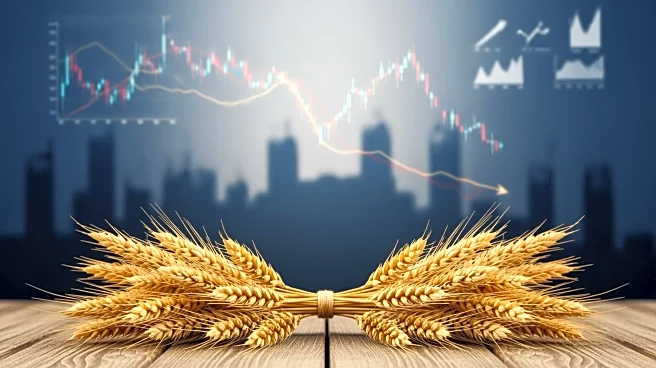What's Happening?
The U.S. grain markets are experiencing a downturn, with December corn prices falling by 4 cents to $4.31¼ per bushel and January soybeans dropping by 17¾ cents to $11.16½ per bushel. This decline follows
recent gains spurred by news of China reducing tariffs on agricultural products. However, the optimism was short-lived as the realization set in that significant obstacles remain before U.S. commodities can see meaningful demand from China. Arlan Suderman, chief commodities economist at StoneX, noted that while some cargoes of soybeans and soft wheat have been sold to China, the volumes are insufficient to make a substantial impact, and a formal trade deal has yet to be signed. This uncertainty is causing farmers to sell incrementally into the recent rally, further challenging the market's ability to sustain upward price movements.
Why It's Important?
The current situation in the grain markets highlights the ongoing volatility and uncertainty faced by U.S. farmers and the agricultural sector. The potential for increased demand from China had raised hopes for a more stable market, but the lack of a formal trade agreement and insufficient sales volumes have tempered these expectations. This uncertainty affects not only farmers but also the broader agricultural supply chain, including exporters and related industries. The fluctuating prices and market instability could lead to financial strain for farmers who rely on stable commodity prices to plan their operations and investments. Additionally, the broader economic implications are reflected in the stock market, with indices like the S&P 500 and Dow Jones Industrial Average also experiencing declines.
What's Next?
The grain markets are likely to remain sensitive to any developments in U.S.-China trade relations. Stakeholders will be closely monitoring any announcements or progress towards a formal trade agreement that could potentially boost demand for U.S. agricultural products. In the meantime, farmers and market participants may continue to face challenges in navigating the current market conditions. The situation underscores the importance of strategic planning and risk management for those involved in the agricultural sector.













